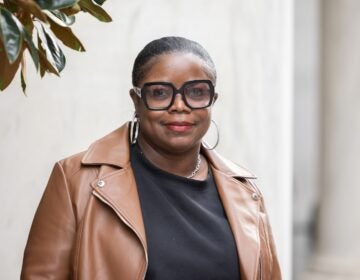Drexel-Queen Lane land use committee addresses congested parking concerns
In room A-2, a sense of cooperation abounded.
On Thursday evening, a dozen representatives of college and community attended a land-use planning meeting at Drexel University College of Medicine in East Falls.
The purpose of the session, held at Drexel’s Queen Lane Medical Campus, was to present the findings of the Drexel-Queen Lane (D-QL) Land Use Working Group for public review.
The D-QL Working Group is one of three land use planning committees established by the East Falls Community Council [EFCC].
Their conclusions – along with those of the Philadelphia University and William Penn Charter School groups – will be submitted to the Philadelphia City Planning Commission for inclusion in its comprehensive plan, entitled Citywide Vision: Philadelphia 2035.
An aesthetically-pleasing campus
Roger Marsh, EFCC officer and Chair of the Drexel-Queen Lane Working Group, presided.
His group’s study began with a stroll.
“It was a real education for me – walking around campus,” said Marsh, and proceeded to speak highly of what he observed at the 14-acre site.
He complimented the preservation of the main building and the appealing landscape of the grounds, and noted the unobtrusive nature of the college’s signage.
“We looked at them, and they’re not so bad – we don’t want LED’s like Channel 6 or PCOM,” he said, referring to a pair of conspicuous displays located on City Line Avenue.
Marsh observed that the college – bordered on three sides by SEPTA rail beds and Water Department property – has little visual impact on the community.
“It looks nice the way it is and we’d like to keep it that way,” he concluded.
No plans for ‘large-scale’ expansion
Representing Drexel University was Joseph Ungaro, Assistant Vice President of Health Sciences Campus Operations.
Responding to a question about pending expansions at the College of Medicine, Ungaro said that ‘it’s all driven by enrollment.”
While Ungaro confirmed that there are no plans at present for what he termed as a “large-scale” expansion, he said that such developments will be dictated by the changing needs of students and faculty.
“In five to ten years, who knows where the industry will go,” said Ungaro.
An opportunity to relieve parking issues
The meeting continued with a discussion about the relationship between the school and the community.
Marsh began with praise for the students.
When compared to other student bodies represented in East Falls, “the consensus is that Drexel students are much more conscientious,” said Marsh.
“They’re too busy to party,” he suggested.
However, in a situation similar to that of many neighborhoods that share borders with Philadelphia colleges and universities, student parking in residential streets continues to be a vexing issue.
In regard to the Drexel-Queen Lane Land Use plan, Marsh referenced parking as being “the only substantial concern,” and joked that residents have been known to characterize it as being “not horrible.”
Michael Moulton, East Falls resident and member of the Penn Charter working group, suggested exploring alternate means of student transportation, such as ride-sharing.
While he conceded that “you can’t make people ride-share,” he proposed that schools provide resources to facilitate its implementation.
And, with school administrations now recognizing the negative impact that overflow-parking causes, Moulton added that, along with residents, “institutions want less cars.”
In reply, Ungaro said Drexel has a mechanism in place to combat this situation – shuttle buses that run from a Center City pick-up point to the Queen Lane campus and back.
“The morning shuttles (from Center City) are our most crowded,” he offered.
Some in attendance asked why shuttles to either the East Falls or the Queen Lane SEPTA rail stations – the latter of which is immediately off-campus – couldn’t be instituted to further discourage drivers.
Ungaro said it was a matter of liability.
“Any place where we make people wait, we’re liable,” said Ungaro, adding that at those two stops, “we can’t protect them.”
Addressing public safety on site
In addition to student well-being, the issue of public safety and maintenance in the area between the Queen Lane SEPTA station and the college campus was raised.
George Jones, whose family has lived on Queen Lane since 1971, recently returned to East Falls after a seven-year exodus in Drexel Hill.
While he praised the College of Medicine for its relationship with the community – “everything is being handled beautifully,” he said – he noted that the corner lot between the college and the SEPTA stop has become wildly overgrown.
Jones said the space “went from being a beautifully lit dell to being a dumping zone,” and that he has had to resort to calling the police to chase away people that he’s witnessed dumping illegally.
He concluded with a succinct appraisal – “The walk to the train has become dangerous.”
Both Marsh and Ungaro, speaking for their respective entities, were quick to offer responses.
Ungaro suggested that the lot probably belonged to SEPTA, and that documentary evidence such as a photograph could begin the process of assigning ownership and addressing clean-up.
Marsh added that, “once we define the boundaries, we can begin harassing SEPTA.”
It was in this spirit of cooperative enterprise that he adjourned the meeting.
“We want to work with Drexel,” said Marsh. “We’re not going to tell them what to do.”
WHYY is your source for fact-based, in-depth journalism and information. As a nonprofit organization, we rely on financial support from readers like you. Please give today.




